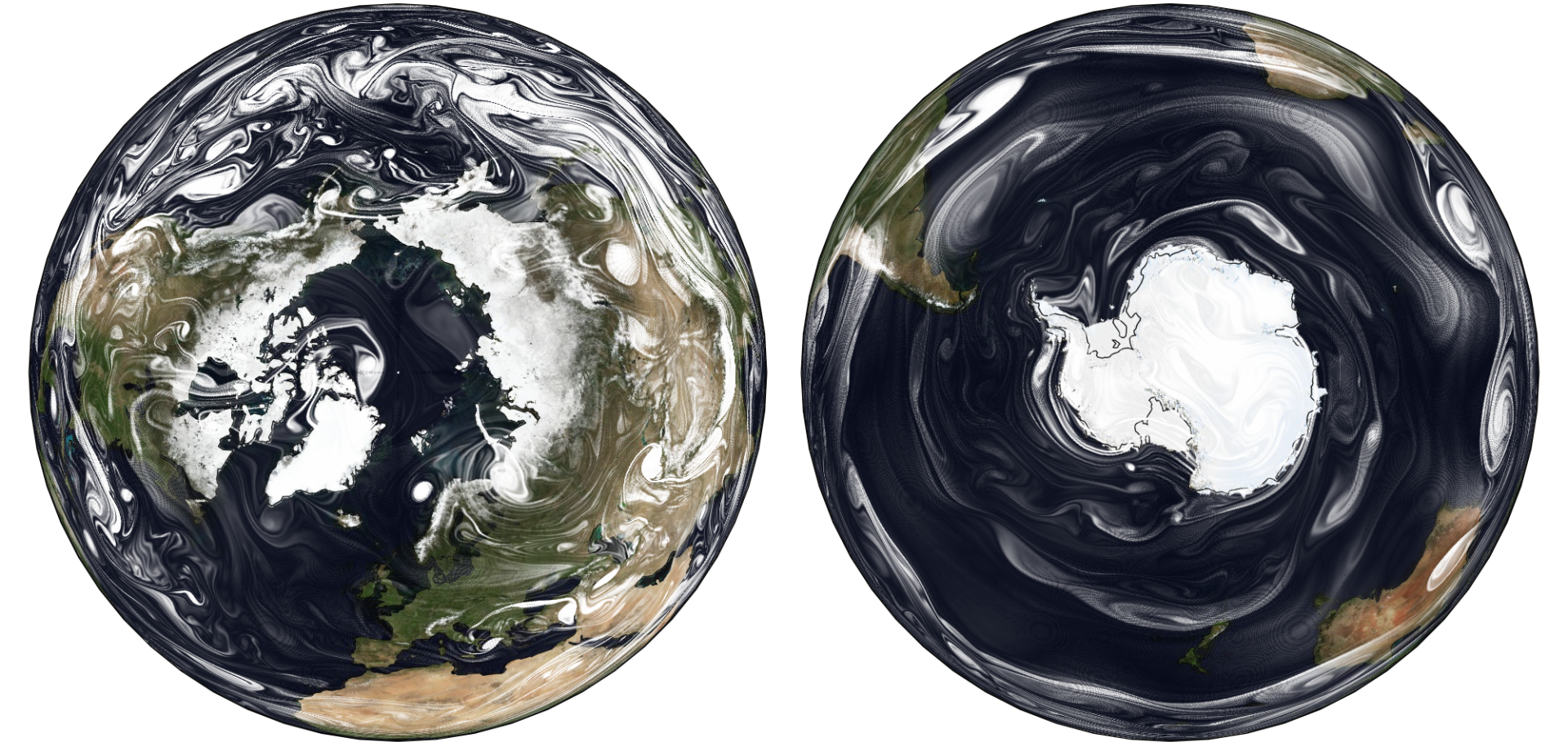please see my personal website milankl.github.io, or our group website climate-modelling.github.io
About me
I’m a NERC Independent Research Fellow at the University of Oxford working on integrating machine learning into climate modelling. During my PostDoc at the Massachusetts Institute of Technology I started developing SpeedyWeather.jl, a modern atmospheric model written in Julia. With this model I’m on a mission to reinvent atmospheric modelling towards interactivity and extensibility accelerating climate research. Based on this user and developer-friendly model, I am using machine learning to correct the simulated climate towards data. My fellowship aims to do that in an online-learning fashion, integrating machine-learned corrections on every time step. I was previously a Schmidt AI in Science and Associate Research Fellow at Reuben College Oxford.
I hold a PhD from Oxford in climate computing with Tim Palmer after a very comprehensive education in climate physics from different universities in Germany, France, and Norway. During that time, I crossed the Tropical Atlantic on an oceanographic research vessel and spent a winter in Svalbard.
Research interests
- Climate modelling: Combining machine learning and dynamical models, atmosphere and ocean, grid-point and spectral, dynamical core development, stochastic parameterizations, turbulence closures.
- Computing: High-performance, low-precision, parallel, CPU vs GPU, number formats, posit arithmetic, stochastic rounding, efficiency.
- Data compression: Real information in climate data, lossy and lossless, information theory, data formats.
- Predictability of weather and climate: Chaos, uncertainty, ensemble prediction, error growth, weather forecasting.
- Software engineering: Open source, multiple dispatch and code composability, automatic differentiation, and the Julia programming language.
- Data visualisation and science communication: Intuitive diagrams, user experience, better posters, better talks, accessibility and alwasy very pretty plots.
- Decarbonisation: Aviation's contribution on global warming, carbon footprints, decarbonising science.
Prospective students
As a NERC Independent Research Fellow at Oxford Physics/AOPP I can supervise Master and PhD (DPhil in Oxford slang) students now, particularly in the PhD programmes Intelligent Earth CDT and ILESLA (previously Environmental Research DTP). As part of this fellowship I am building the new Climate Modelling research group in Oxford, see climate-modelling.github.io where we also outline some current projects and potential future projects that you might be interested in. If you are interested in pursuing a PhD and would love to work on and learn about atmospheric modelling in combination with machine learning please reach out. Especially if you are not keen to drown in dusty Fortran code — not my passion either. I am always fire to bring brandnew concepts of software engineering and computer science into climate research. That’s why I am an active Julia developer, see my GitHub profile. My research interests cover large various aspects between climate physics, modelling, computer science and software engineering, see above.
Some notes for reaching out
- Please write me a specific email discussing your and my research interests. The chances are high that I need to ignore generic emails due to volume.
- Prospective students that are in some sense underrespresented are particularly encouraged to reach out, others (like I was) probably feel entitled enough anyway.
- Apply via Intelligent Earth, ILESLA (and potentially other Oxford PhD programmes) or directly to the department. Oxford doesn’t hire students like employees, neither can I.
- Funding is available with the aforementioned PhD programmes. If you apply to the department directly your application will be automatically forwarded to Oxford internal funding bodies if selected. Or you can bring in external funding, we do not allow self-funded PhDs though.


